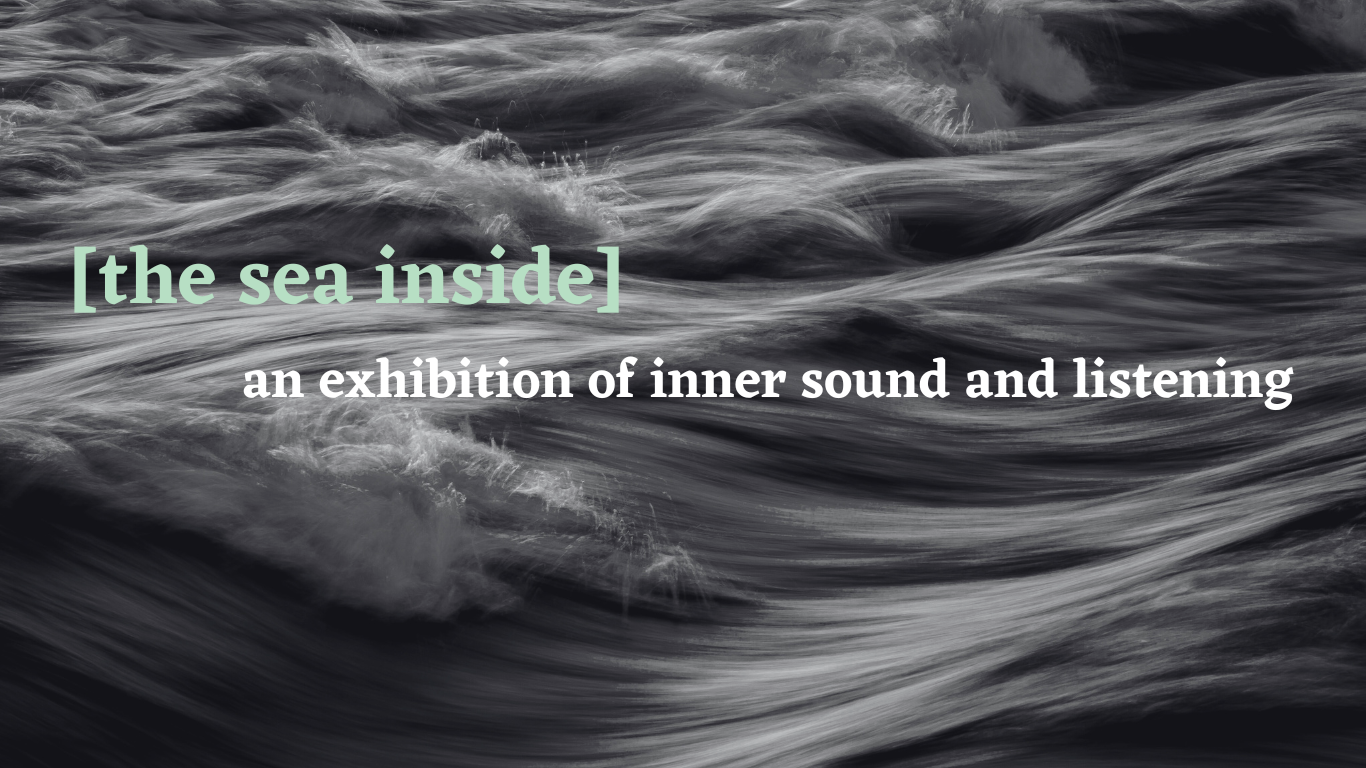Mapping experiences of inner sounds
My practice-based PhD from CRiSAP, University of the Arts, London, titled "Mapping experiences of inner sounds" investigates sounds in thoughts, asking if we hear sounds in our minds, what they mean to us and where they come from. My sound art and performance practice form an integral part of the research process, driving the research forward, often functioning as a way for me to work through and make sense of complex intersecting ideas and concepts. Through my research, I defined inner sounds as 'sounds we hear in both our conscious and unconscious mind, similar to, but different from an inner voice.'
My research investigates strategies of articulating and making inner sounds audible, and exploring the possibility, or impossibility, of developing a language to externalise and map experiences of inner sounds. The research also asks what a greater understanding of inner sounds means for our wider, cultural perception of listening, sound and sonic art.
My thesis 'Mapping Experiences of Inner Sound' and it's companion text 'Hearing Things', which presents the practice element of my research project, are both accessible online - just follow the links below!
Mapping Experiences of inner sound - thesis
Abstract
This practice-based research expands the sound art discourse by identifying, defining, and
analysing what I have termed ‘inner sounds’— sounds we hear in both our conscious and
unconscious minds, similar to but different from an inner voice. Rarely, if ever, is the way we
experience sounds in our minds discussed in contemporary sound art discourse. This thesis
defines ‘inner sounds’ and contributes to the field of sound art discourse by arguing that a
deeper understanding of our relationship to inner sounds informs our wider understanding of
sound, specifically our understanding of sound as a cultural phenomenon.
Identifying the lack of an adequate vocabulary in the English language with which to discuss
sound and inner sound experiences, the thesis develops a taxonomy of inner sounds, which
allows for a more nuanced and detailed analysis of inner sound experiences.
In addition to outlining a taxonomy for inner sound, the thesis analyses several art and
performance works, including my own, further developing several theoretical considerations
for inner sound and listening experiences. Chapter 4, ‘The danger of inner sound’, examines
our relationship to auditory hallucinations, discussing why inner sounds are often perceived
as dangerous. Chapter 5, ‘Collective inner listening’, asks whether collective inner listening
is possible, and how that develops our understanding of inner sound experiences and sound
art theory. Chapter 6, ‘Threshold listening’, draws on affect theory to argue that the
properties of inner sound discussed in previous chapters situates inner listening and inner
sound at the threshold, and evaluates how this changes our understanding and discourse of
sound art.
Hearing Things - Practice
A sister publication to the thesis. While there are overlaps and both compliment eachother, they can also be read independently.
PHD WEBINAR – "MAPPING EXPERIENCES OF INNER SOUNDS"
the sea inside
'The Sea Inside' was an exhibition of the work created as part of my research project. it explored ideas of inner sound and listening through a wide range of works: scores, texts, objects and performance pieces.
Conference Papers and Talks
Sound/Image University of Greenwich, 2015 he image as a trigger for inner sound'
Sound Art Matters University of Aarhus, 2016 Porous Listening
Sound/Image University of Greenwich, 2017 thresholds
Tate Research Tate Galleries, 2022 Mapping experiences of inner sound' - research presentation

